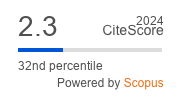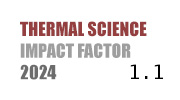ABSTRACT
To explore the influencing factors of explosion accidents caused by gasoline leakage in a confined space, the effects of ignition delay time, ignition energy, initial pressure, initial temperature and mass concentration on gasoline vapor explosion pressure and flame propagation velocity were investigated using a 20 L spherical explosion vessel. The dynamic explosion temperature distribution of gasoline vapor was mapped by the colorimetric thermometry, and the results demonstrated that the optimal ignition delay time, ignition energy and mass concentration of gasoline vapor in the confined space were 100 ms, 100 J and 160 g/m3, respectively. When the initial pressure was 0.11 MPa, the deflagration pressure of gasoline vapor explosion reached the maximum of 1.08 MPa. The influence of the increasing initial temperature on the maximum explosion pressure rise rate of gasoline was greater than that on the explosion pressure and combustion duration. When the mass concentration of gasoline vapor was 160 g/m3, the flame propagation velocity and average temperature both obtained their maximum values of 1.23 m/s and 2271 K, respectively. The research results were conductive to reveal the mechanism of explosion accidents caused by gasoline leakage in a confined space, and may provide theoretical guidance for safe storage and transportation of gasoline.
KEYWORDS
PAPER SUBMITTED: 2024-10-19
PAPER REVISED: 2024-11-28
PAPER ACCEPTED: 2024-12-09
PUBLISHED ONLINE: 2025-02-16
- G. Li, X. Wang, X. Zhao. Experimental study on explosion characteristics of ethanol gasoline blended fuels. Journal of Loss Prevention in the Process Industries. 64 (2020), 104083
- R. Küçükosman, H. Değirmenci, A. A. Yontar. Combustion characteristics of gasoline fuel droplets containing boron based particles. Combustion and Flame. 255 (2023), 112887
- X. Wang, E. Shi, C. Qi. Experimental study on aerosol explosion characteristics and flame propagation behavior of aluminum/ethanol nanofluid fuel. Fuel. 352 (2023), 129022
- S. Guo, F. Wu, H. Wang. Evolution characteristics of ethyl ether spray explosion process in 20L near spherical vessel. Fuel. 357 (2024), 129736
- V. Heilmann, S. Zakel, D. Gabel. Influence of different ignition delay times on the pressure rise rate in hybrid mixture explosions in the 20 L sphere. Journal of Loss Prevention in the Process Industries. 84 (2023), 105106
- K. Shen, Z. Xu, H. Chen. Combined effects of high energy ignition and tumble enhancement on performance of lean combustion for GDI engine. Experimental Thermal and Fluid Science. 129 (2021), 110464
- J. Liu, C. E. Dumitrescu. Analysis of two stage natural gas lean combustion inside a diesel geometry. Applied Thermal Engineering. 160 (2019), 114116
- Y. Liu, Y. Zhang, D. Zhao. Effects of initial temperature and pressure on explosion characteristics of propane--diluent--air mixtures. Journal of Loss Prevention in the Process Industries. 72 (2021), 104585
- E. Shi, J. Yu, C. Qi. Explosion characteristics and reaction mechanism of nano--aluminum/methanol fuel spray in a square closed vessel. Fuel. 357 (2024), 129928
- J. Kang, Z. Wang, H. Jin. Dynamic risk assessment of hybrid hydrogen--gasoline fueling stations using complex network analysis and time--series data. International Journal of Hydrogen Energy. 48 (2023), 30608--30619
- G. Li, K. Zheng, S. Wang. Comparative study on explosion characteristics of hydrogen and gasoline vapor in a semi--confined pipe based on Large Eddy Simulation. Fuel. 328 (2022), 125334
- A. Galeev, Y. Chistov, S. Ponikarov. Numerical analysis of flammable vapour cloud formation from gasoline pool. Process Safety and Environmental Protection. 137 (2020), 211--222
- H. W. Wan, Y. Q. Wen, Q. Zhang. Explosion behaviors of vapor--liquid propylene oxide/air mixture under high--temperature source ignition. Fuel. 331 (2023), 125815
- J. Cheng, B. Zhang. Analysis of explosion and laminar combustion characteristics of premixed ammonia--air/oxygen mixtures. Fuel. 351 (2023), 128860
- X. Song, H. Su, Xie. L, et al. Experimental investigations of the ignition delay time, initial ignition energy and lower explosion limit of zirconium powder clouds in a 20 L cylindrical vessel. Process Safety and Environmental Protection. 134 (2020), 429--439
- L. Zhan, H. Chen, H. Zhou, et al. Droplet-particle collision dynamics: A molecular dynamics simulation. Powder Technology. 422 (2023): 118456
- V. Heilmann, S. Zakel, D. Gabel, et al. Influence of different ignition delay times on the pressure rise rate in hybrid mixture explosions in the 20-L sphere. Journal of Loss Prevention in the Process Industries. 84 (2023), 105106
- W. Sun, J. Ji, Y. Li. Dispersion and settling characteristics of evaporating droplets in ventilated room. Building and Environment. 42(2) (2007), 1011--1017
- Y. B. Chen, Z. Yang, Z. Lv. Effect of ignition energy on combustion characteristics of flammable working fluids. Fuel. 335 (2023), 127022
- T. Zhang, J. F. Zhang, Z. Lv. et al. Insight into energy release characteristics of TiH2 dust explosion through ignition experiments and molecular dynamic simulations. Process Safety and Environmental Protection. 185 (2024), 853--863
- C. Liu, K. Tang, C. Huang. Effect of initial pressure on the critical characteristics and overpressure of hydrogen--air premixed gas combustion and explosion. International Journal of Hydrogen Energy, 49 (2023), 311--322
- S. Li, Y. F. Cheng, R. Wang, et al. Suppression effects and mechanisms of three typical solid suppressants on titanium hydride dust explosions. Process Safety and Environmental Protection, 177 (2023): 688--698
- R. J. Sornek, R. Dobashi, T. Hirano. Effect of turbulence on vaporization, mixing, and combustion of liquid--fuel sprays. Combustion and Flame, 120(4) (2000): 479--491
- H. Zhang, Z. Lu, T. Wang. Mist formation during micro--explosion of emulsion droplets. Fuel, 339 (2023): 127350
- S. Wang, D. Wu, H. Guo. Effects of concentration, temperature, ignition energy and relative humidity on the overpressure transients of fuel--air explosion in a medium--scale fuel tank. Fuel, 259 (2020): 116265
- C. Qi, X. Yu, Y. Wang . Investigating the effect of temperature, pressure, and inert gas on the flammability range of ethane/oxygen mixtures. Fuel. 354 (2023), 129296
- G. Zhang, J. Guo, J. Zhang. Experimental study on flame propagation through stratified crude oil vapor in a horizontal duct. Fuel, 294 (2021), 120531
- C. Zhang, C. H. Bai, J. Yao. Liquid component effect on the dispersion and explosion characteristics of solid--liquid mixed fuel. Fuel. 319 (2022), 123806
- H. Wang, F. Wu, X. Pan. Spray and explosion characteristics of methanol and methanol--benzene blends near azeotrope formation: Effects of temperature, concentration, and benzene content. Journal of Loss Prevention in the Process Industries. 83 (2023), 105079
- H. Wan, Y. Wen, Q. Zhang. Flame behaviors and explosion characteristics of two⁃phase propylene oxide/air mixture under different ambient pressures. Process Safety Progress. 42(1) (2023). 126--140
- P K Vishwakarma, K B Mishra. Influence of sequential fireballs on thermal safety distance estimations for organic peroxide drums. Journal of Loss Prevention in the Process Industries, 75 (2022), 104683
- D. O. Glushkov, K. K. Paushkina, A. O. Pleshko. Characteristics of micro--explosive dispersion of gel fuel particles ignited in a high--temperature air medium. Fuel, 313 (2022), 123024
- T. M. Vu, W. S. Song, J. Park, et al. Measurements of propagation speeds and flame instabilities in biomass derived gas--air premixed flame. International Journal of Hydrogen Energy, 36 (18) (2011), 12058--12067
- X. L. Gu, Q. Q. Li, Z. H. Z, et al. Measurement of laminar flame speeds and flame stability analysis of tert--butanol--air mixtures at elevated pressures. Energy Conversion and Management, 52 (10) (2011), 3137--3146
- A. A. Konnov, L. V. Duakov. Measurement of propagation speeds in adiabatic cellular premixed flames of CH4+O2+CO2. Experimental Thermal and Fluid Science. 29 (8) (2005), 901--907
- Z. H. Wang, Y. F. Cheng, T. Mogi. Flame structures and particle--combustion mechanisms in nano and micron titanium dust explosions. Journal of Loss Prevention in the Process Industries, 80 (2022), 104876
- E. Shi, J. Yu, C. Qi. Explosion characteristics and reaction mechanism of nano--aluminum/methanol fuel spray in a square closed vessel. Fuel, 357 (2024), 129928
- W Wang, Y. F. Cheng, R Wang. Flame behaviors and overpressure characteristics of the unconfined acetylene--air deflagration. Energy, 246 (2022), 123380
- Q. W. Zhang, Y. F. Cheng, B. B. Zhang. Deflagration characteristics of freely propagating flames in magnesium hydride dust clouds. Defence Technology, 31 (2023), 471--483
- R. Wang, Y. F. Cheng, S. Z. LI Inhibitory effects of typical inert gases on the flame propagation and structures in TiH2 dust clouds. Powder Technology, 427 (2023), 118795
- F. F. Hu, Y. F. Cheng, B. B. Zhang. Flame propagation and temperature distribution characteristics of magnesium dust clouds in an open space. Powder Technology, 404 (2022), 117513
- J. K. Tavares, V. Gururajan, J. Jayachandran. Effects of radiation heat loss on planar and spherical hydrofluorocarbon/air flames. Combustion and Flame. 258 (2023), 113067

